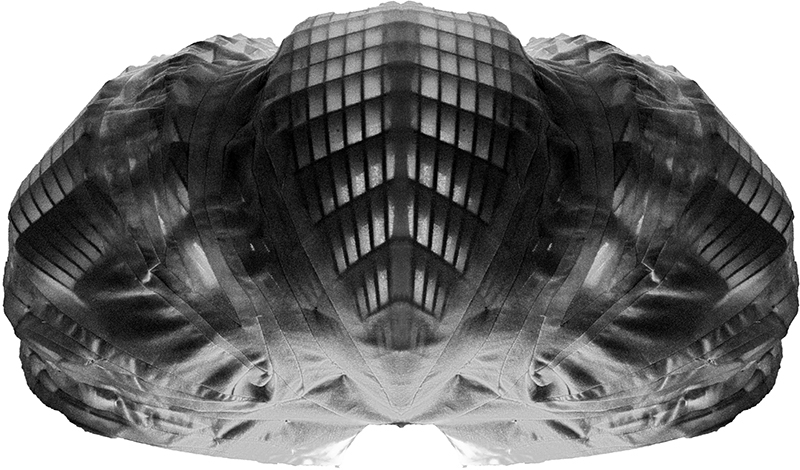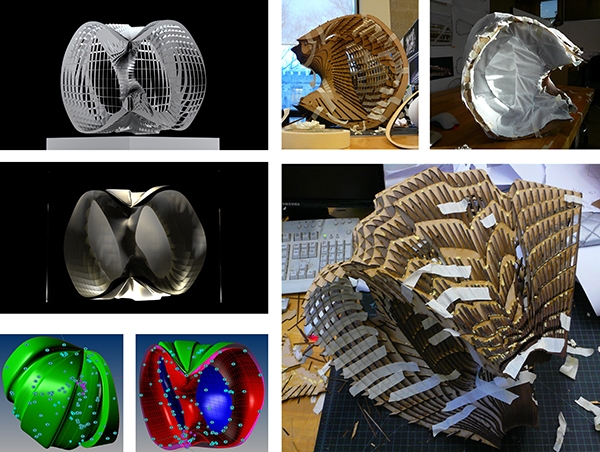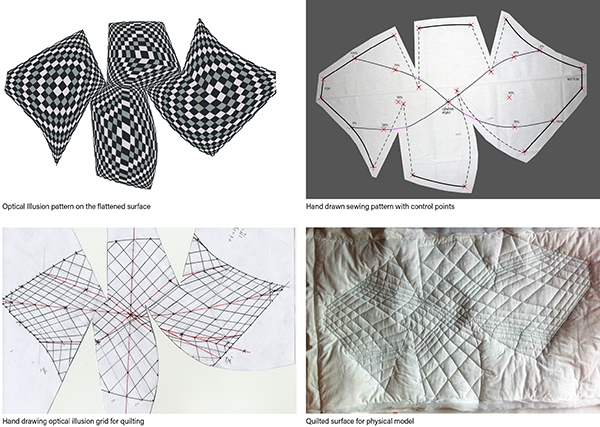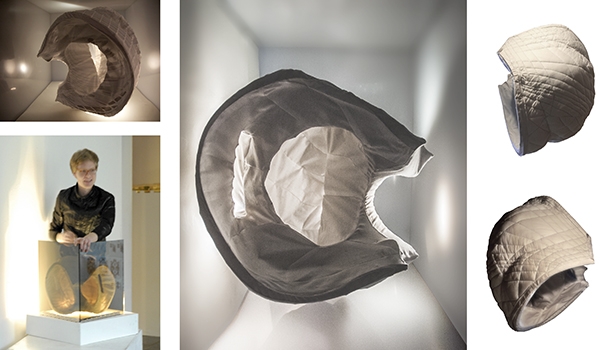Cocoon
Dymaxion House / Circus Tent / Kinbaku-bi (緊縛美)
This is a place to create and capture nocturnal, subconscious visions. Inside are five sub-chambers: three audio-visual stimulation spaces, one sound-deadening space, and one dream-capture device. The structure is bi-axially focused onto the central core of the chamber: the dream-capture lounge. The chamber is grounded by four pneumatic pistons that tie it to the ground and can also be used to stabilize the chamber; which you can see in the section drawing. This image shows one half of the chamber. You can easily see the custom egg-crate structure through the gauze cotton fabric because the chamber’s skin is semi-translucent for allowing sunlight to filter into the spaces. In the full-scale construction of the chamber, these surfaces would be Teflon Coated Fiberglass molded panels.
The exterior performance is inspired by the circus and optical illusions. The overall surface of the exterior has been spun out from the paranoiac experience I once had at the Villa Rotonda. This experience showed me the limitations of the plan, and the potential of working in all three dimensions, which you will see on a later page. The physical model was made as a result of this. If you look closely at this drawing you will see that one of the audio-visual spaces (the faux-jungle) and the sound-deadening space are visible. At the center of the drawing is the dream-capture lounge chair.
The plan of this project is directly connected to the Villa Rotonda, however, it is modified as a direct result of the new program. It can be seen how the project becomes in some ways more homogeneous and simple in plan, but in others, it is far more nuanced and specific in three dimensions. The walls are distorted to give an overall endless feel to the interior. The chamber is fitted with heating, air, and distribution networks that service all of the spaces. The brain and storage of the chamber are located in the four columns surrounding the central dream-capture chair.
The structure is composed of two radially-derived series of ribs. One series emanating from a center point and towards the U isocurves of a bounding sphere and the other towards the V isocurves of a bounding sphere. The patterns for the fabric surfacing were extracted from a single NURBS surface, discretized depending on the lines of minimal curvature.
The embroidery process involves creating a new pattern for the exterior surface of the previous model, akin to pattern making in fashion design with pleats and annotations of the peculiarities of the organic surface. The layout of the optical illusion pattern, that invokes bulging forms and spinning diamonds, involves determining where the focal points of the model will be and the make-up of the pattern itself. This process is quite complex and requires a variety of geometrical manipulations to ensure that the distortion of the op-pattern is even and that the fabric pattern remains the same as it was when measured.
The exterior performance is inspired by the circus and optical illusions. The overall surface of the exterior has been spun out from the paranoiac experience I once had at the Villa Rotonda. This experience showed me the limitations of the plan, and the potential of working in all three dimensions, which you will see on a later page. The physical model was made as a result of this. If you look closely at this drawing you will see that one of the audio-visual spaces (the faux-jungle) and the sound-deadening space are visible. At the center of the drawing is the dream-capture lounge chair.
The plan of this project is directly connected to the Villa Rotonda, however, it is modified as a direct result of the new program. It can be seen how the project becomes in some ways more homogeneous and simple in plan, but in others, it is far more nuanced and specific in three dimensions. The walls are distorted to give an overall endless feel to the interior. The chamber is fitted with heating, air, and distribution networks that service all of the spaces. The brain and storage of the chamber are located in the four columns surrounding the central dream-capture chair.
The structure is composed of two radially-derived series of ribs. One series emanating from a center point and towards the U isocurves of a bounding sphere and the other towards the V isocurves of a bounding sphere. The patterns for the fabric surfacing were extracted from a single NURBS surface, discretized depending on the lines of minimal curvature.
The embroidery process involves creating a new pattern for the exterior surface of the previous model, akin to pattern making in fashion design with pleats and annotations of the peculiarities of the organic surface. The layout of the optical illusion pattern, that invokes bulging forms and spinning diamonds, involves determining where the focal points of the model will be and the make-up of the pattern itself. This process is quite complex and requires a variety of geometrical manipulations to ensure that the distortion of the op-pattern is even and that the fabric pattern remains the same as it was when measured.
Design Drawings
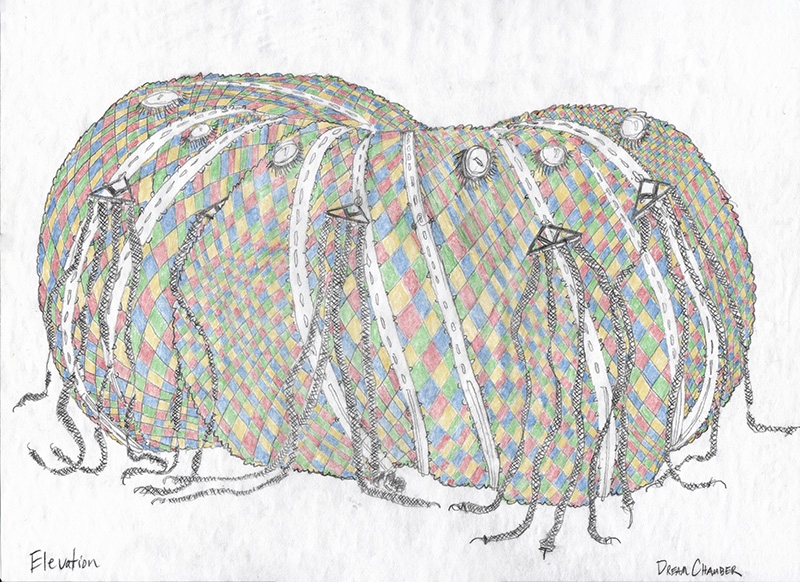
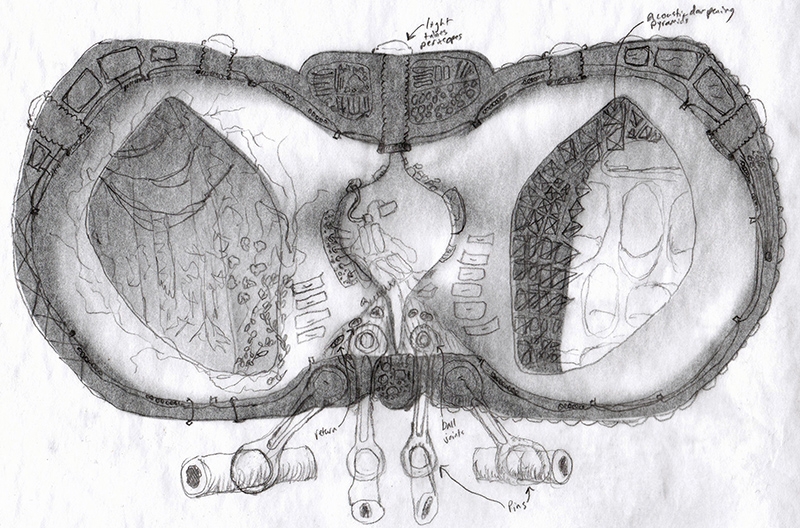
Concept Diagrams & Drawings
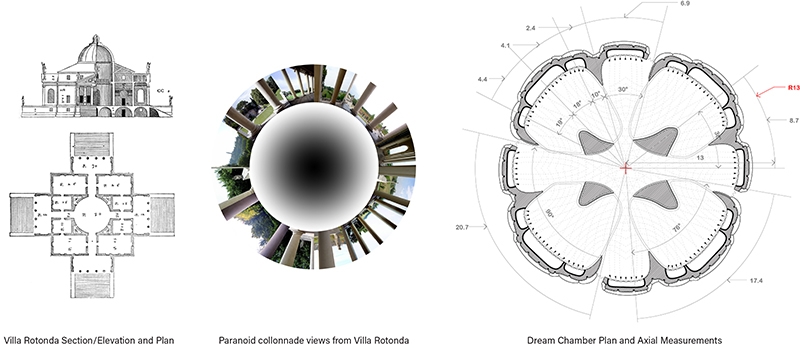
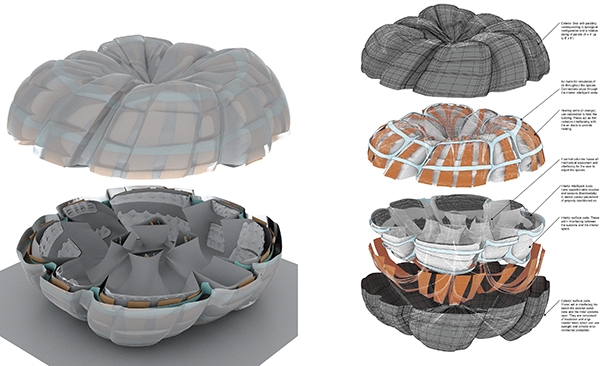
Fabrication Documents
